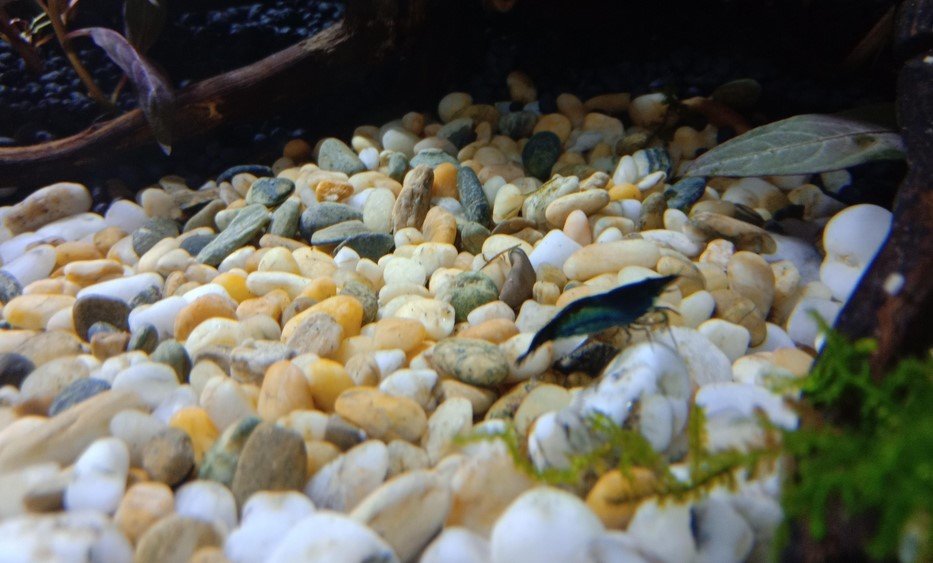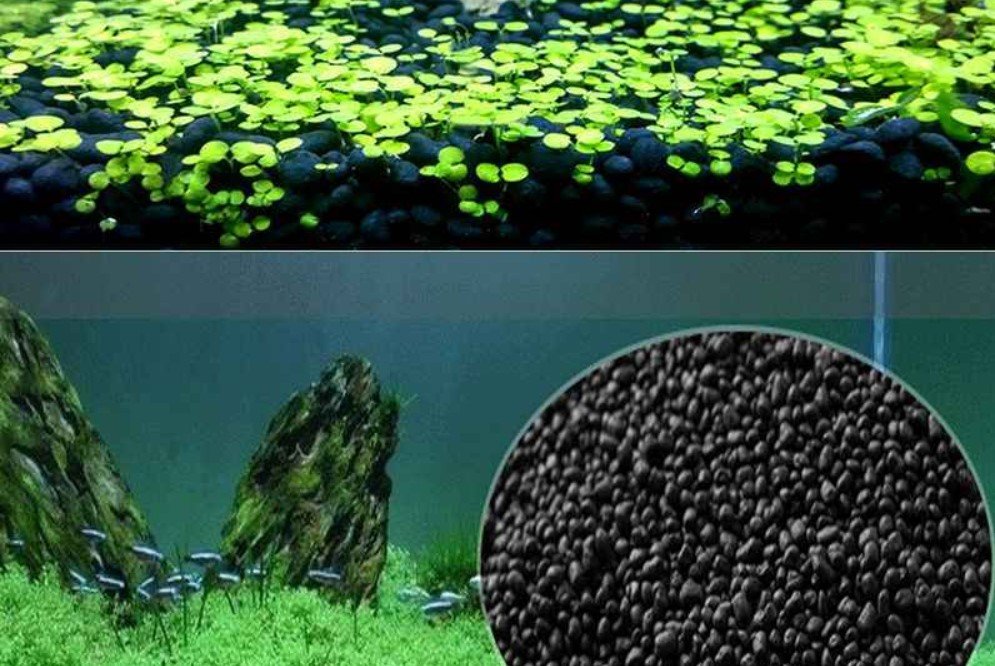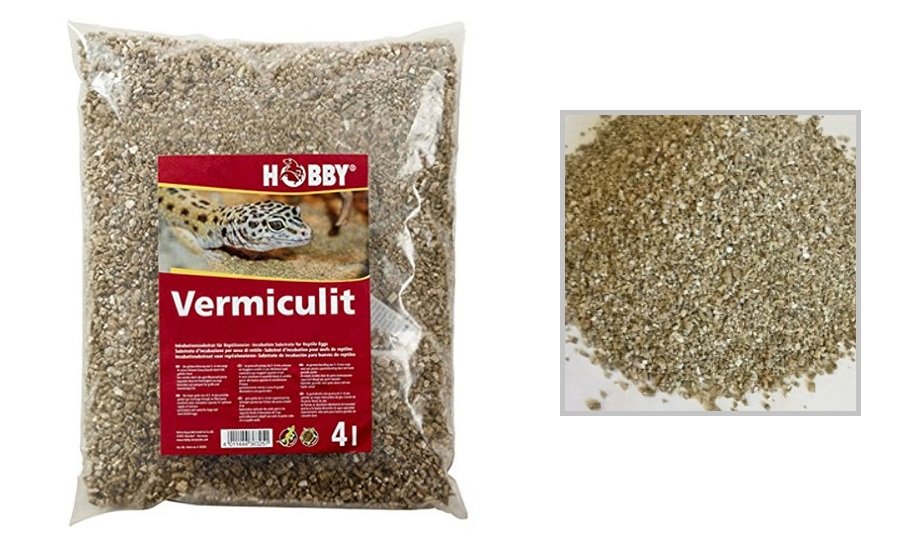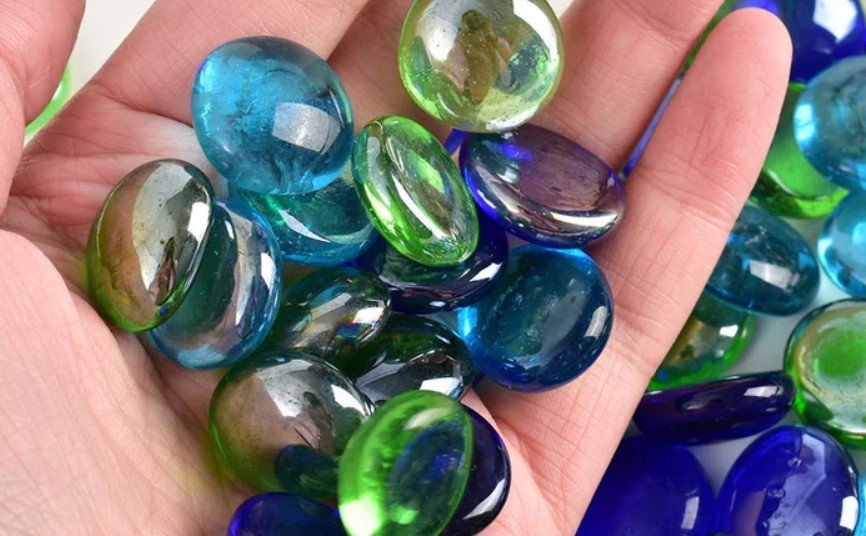Installing a freshwater aquarium requires choosing a suitable substrate in order to give your aquatic fish and plants a suitable habitat. Substrates for freshwater aquariums not only enhance the outlook but also create a healthy environment.

But getting substrates can be quite confusing, as there are many types available, each with its own distinctive properties and characteristics. No worries, we will walk you through the best substrates you can choose for your aquarium setup.
What Type Of Substrate Is Ideal For Freshwater Aquariums?
Depending on how you plan to construct the freshwater aquarium, you can select from primarily two different types of substrate.
These are substrates for aquariums with and without vegetation. Let’s explore each of them.
Substrates For Aquariums Without Vegetation
The substrate choices for freshwater aquariums without vegetation are more focused on aesthetics and quick maintenance.
These substrates offer a neat and lovely base while providing effective disposal of waste and giving fish a habitat that looks natural.
- Sand
- Gravel
- Decorative stones, such as pebbles, are some examples.
Substrates For Aquariums With Vegetation
When creating a freshwater aquarium with vegetation, substrates are necessary to aid in plant growth and the absorption of nutrients.
Certain substrates that supply necessary nutrients and support robust root growth support aquatic plant habitats.
- Fluorite
- Eco-complete,
- Aquatic soil and more
10 Best Substrates For Freshwater Aquarium
Check out these top 10 freshwater substrates to determine which is best for your aquarium’s set-up.
1. Gravels
Due to its easy accessibility, versatility, and advantageous qualities, gravel is a popular substrate in freshwater aquariums.
It gives the tank a natural appearance and enhances the flow of water, preventing stagnant areas.

You can customize it for different aquarium layouts. It is because you are free to choose gravel in numerous sizes and colors.
You must select gravel with soft edges to minimize fish injuries and maintain adequate hygiene and maintenance to avoid debris buildup.
With the use of gravel, it becomes very easy and quick to wash and clean the bottom of the fish aquarium.
However, some downsides of using gravels include a lack of nutrients for vegetation, fish droppings and food accumulations, altering pH and hardness of water, etc.
2. Natural Pebbles
Pebbles are found naturally as round stones with smooth surfaces on the bottom of rivers, aside from rocky mountains.
They provide the tank with an appealing, organic appearance. Pebbles are inert, which means they don’t change the water’s characteristics, such as pH or hardness.

Natural pebbles are good for a variety of fish species. You will get a solid base for plants with long roots that are easy to clean and maintain.
Pebbles may not, however, attach to plants with sensitive roots or other substrates because of their smooth surface.
However, because of their tiny size, it may be harder to remove debris that collects between the pebbles. This makes cleaning the fish aquarium quite challenging and requires extra caution.
3. Aquarium Soil
Aquarium soils are made differently as compared to the soil or mud found in your backyard.
Different companies produce the soils specifically for fresh water to create a solid base inside the aquariums. If you are fond of putting live plants in your aquarium, then soil could be a good option.

These soils are naturally nutrient and mineral rich, resulting in a perfect environment for plant development.
You will get better growth from strong root systems and improve the mechanism of plant nutrient absorption.
Besides, aquarium soils are compact, which helps reduce nutrient loss due to washing or water changes.
Additionally, your tank will have a natural and attractive appearance due to its brown color. However, during the early setup phase, aquarium soils occasionally release ammonia.
This alters the pH balance of the water. You may need to regularly fertilize the soil base to maintain plant health in the long run.
Therefore, extra maintenance and caution are required when using soil as a freshwater substrate.
4. Sand
Another naturally available substrate for freshwater aquariums is sand. You can also use beach sand for your aquarium after thorough processing. Sand has a smooth and soft texture with a pleasant color, making your aquarium look like a tropical beach.
Since there are no sharp edges, sand causes no physical harm to the delicate fish’s scales. Also, sands as substrates give you accessibility to use other substrates as well, which enhance vegetation.
A versatile property of sand is that it doesn’t hold the droppings of fish or leftover food.
Hence, you will find it easy to clean your fish aquarium and keep it looking nice. The downside of sand is that it does not provide many nutrients and minerals required by plants.
5. Processed Aragonite
A common substrate you can use in aquariums with freshwater is aragonite, particularly if your fish favor alkaline water.
Aragonite is mainly made of calcium carbonate, making it a good substance for maintaining the pH of water.
As a result, the aquatic environment doesn’t become as acidic, which harms the fish.

The white color and small particle size of aragonite make it safe and appealing for fish. Besides, its crystalline structure will make your aquarium base look premium and shiny.
A thing for you to remember is that aragonite may not be appropriate for all setups. It is because not all aquatic plants and fish get along in alkaline environments.
Again, aragonite actively increases the water hardness, which requires continuous monitoring and maintenance, making it tedious for you.
6. Fluorite
A specific substrate you can get for your planted aquariums is fluorite. It is made of porous clay, which offers aquatic plants a nutrient-rich habitat. It doesn’t harm fish of any type. It assists in securely fixing plants and keeping them from uprooting.

Flourite’s rough texture encourages the colonization of beneficial microbes and improves biological filtration, which also creates a better environment for fish growth. Since it is mostly neutral in nature, the water’s chemistry is not hampered much.
However, you may need to deal with specks of dust while setting up your aquarium with fluorite. Moreover, regular maintenance is required since fluorite cannot hold many nutrients for a long time.
7. Vermiculite
A lightweight substrate made of minerals called vermiculite can be utilized in freshwater aquariums. Its small structures and faded color make it look quite impressive inside the water.

It has strong water retention qualities, which help preserve the tank’s moisture levels.
If you have a planted aquarium, then vermiculite can serve as a supply of nutrients, supporting root and plant growth. Its porous structure also encourages the colonization of useful bacteria.
However, with time, vermiculite can occasionally compress, decreasing water flow and perhaps resulting in anaerobic zones.
If not thoroughly cleaned, it could release small debris into the water, causing cloudiness.
Hence, you must keep an eye on the water’s characteristics regularly and maintain cleanliness.
8. Natural Clay
For freshwater fish tanks or aquariums, you can also rely on natural clay surfaces like red or pottery clay.
They give your tank an earthy and natural look. By releasing vital minerals, clay substrates can store nutrients and assist in the growth of plants.
These substrates also support water parameters such as pH and hardness’ general stability. Nevertheless, clay can be dirty and might at first make the water appear cloudy.
Therefore, you must be careful while installing your aquarium and setting up the base. It’s crucial that you select clay that doesn’t include any hazardous chemicals or synthetic additives.
9. Corals
If you have a fish aquarium with fish and vegetation that require an alkaline nature, then corals can be used as substrates.
The buffering effect of crushed natural coral raises and stabilizes the pH and hardness levels.

Hence, you need not put in extra effort to maintain the alkalinity of the water.
Fish species that survive in alkaline environments, such as certain cichlids, grow and develop on this kind of substrate. Corlas give your tank an environment similar to the ocean bottom.
However, it is crucial to remember that few freshwater fish and vegetarians enjoy or tolerate these circumstances. Additionally, coral could release excessive calcium carbonate.
You may need to regularly check the water parameters to ensure the safety of fish and plants.
10. Marbles
Another choice for a freshwater substrate is marble, which gives the aquarium a beautiful ornamental touch.
It may provide a distinctive look and is offered in a variety of colors. Natural white marbles create a premium look for your fish aquarium.

Marble substrates are ideal for a variety of fish species since they do not significantly impact water parameters. So you need not worry about the compatibility of fish and substrates.
However, plants with sensitive roots may not be as effectively rooted by marble’s flat surface. Besides, marbles cannot hold and release nutrients required for vegetation inside the water.
Factors To Consider When Choosing Substrates For Freshwater Aquariums
You cannot simply choose a substrate for your aquarium without considering some important criteria. Keep a tab on the following factors before planning to purchase freshwater substrates.
Fish and Vegetation Compatibility
Check the substrate’s compatibility with the particular demands of the fish and aquatic plants you intend to keep.
Some fish and plant species could have particular acidity/alkalinity, nutrient, mineral, or hardness requirements.
Moreover, small fish with sensitive scales can get injured by the substrate surfaces. Besides, fish behavior should also be taken into account.
Decorative Value
You must pick a substrate that makes your aquarium look pleasant, natural, and eye-catching.
To go with your preferred outlook, gravel, sand, pebbles, or multi-layer customized substrates are good options.
Ease of Maintenance
You need to take into account how simple it will be to keep the substrate clean and in good condition.
Because a dirty aquarium not only damages the outlook but also makes your fish and other living organisms sick inside the water.
Some substrates, such as gravel, and pebbles, might collect and hold dirt, debris, fish droppings, and food.
While other substrates may need more regular cleaning or have certain demands and maintenance needs.
Quantity
You will find substrates in different quantities and packages. Generally, freshwater aquariums require a minimum of a 2 inch substrate base for a healthy habitat for both fish and plants.
Moreover, coverages of inorganic substrates such as gravels and pebbles are higher than that of sand, aquatic soil etc.
Therefore, you must pay attention to the total amount each substrate offers while purchasing one.
Budget
Not all types of substrates come with a price tag. In such cases the volume of your aquarium also plays an active role to alter the expected budget.
Organic soils such as aquatic soil and Eco-complete are slightly more expensive than moat decorative substrates since they contain added nutrients and minerals for vegetation.
Conclusion
Being more into making your aquarium decorative and eye-catching, you can go for substrates such as colorful pebbles, marbles or gravels.
However, to give your aquatic life a more natural and nutrient-rich environment, you have to consider the organic substrates such as fluorite, corals or sand.
We hope this article helped you gather as much information you need to purchase the best suited one for your aquarium.